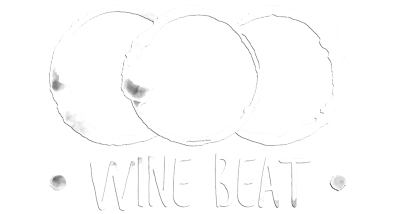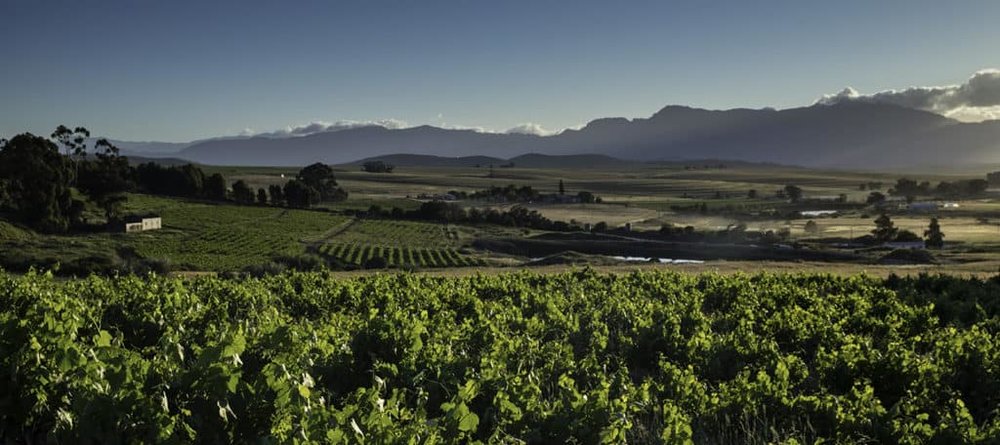
There are a number of factors that can contribute to making a wine region both an outstanding source of high quality wine and also an excitingly fresh hunting ground for the curious wine enthusiast. You might look for a combination of a new region, a new generation of winemakers, a new approach to farming and a newly hip wine grape. Whether you are the winemaker or the wine drinker, the attraction can be in the idea of trailblazing and participating in defining a place by the character of its wines. The Swartland in South Africa has been a something of a blank canvas for visionary, young winemakers. And wine lovers have been only too happy to participate in the story. The location is exotic and the wines are trending. Chenin Blanc and Syrah (sometimes in a GSM blend) are not only super-attractive modern wines but they are also the product of wine varieties that can really reflect the place where they come from. As a case in point, Chenin Blanc wine tends to be more closely characterized by its location and farming practices than, for example, Chardonnay which tends to take its character more from the winemaking process in the cellar.
The Swartland’s wine history, on the whole, is quite recent. Although there has been viticulture in the region for many years, this open, rolling, fertile farmland has traditionally been cultivated for wheat and fruit orchards. However, starting in the 90’s a few adventurous winemakers led by Charles Back of Fairview Cellars began exploring the wine growing potential of the region in earnest. On the face of it the place doesn’t jump out as hospitable to commercial wine making. It is hot and dry. Any kind of wine agriculture is going to be challenging and clearly cannot be done on an industrial scale. However, the marginal land that doesn’t lend itself to wheat farming is quite cheap. This niche opportunity is exactly what appealed to the generation of maverick winemakers that followed in Back’s footsteps. They have seen the chance for bush trained vines in the shale soils of the region to forge a distinctive identity – vines that have to dig deep to find water and thereby develop character. Of course it doesn’t hurt to have the city of Cape Town nearby to provide a market and a substantial flow of wine tourists.
Why The Swartland for Wine?

Chenin Blanc and Syrah are only a couple of a large number of wine varieties grown here. The region has shown itself capable of making excellent Sauvignon Blanc, Cabernet, Pinotage etc. And there are a large number of wineries that have been developed, each with its own suite of wine grapes and its own style. Chenin Blanc, however, has become one of the defining wines for the region. The interplay of climate and geography and soils generates a distinctive Chenin Blanc and the innovative winemakers of The Swartland have been using barrel-ageing, skin contact and other techniques to bring out aspects of Chenin Blanc’s character. Likewise Syrah (interchangeably called Shiraz in South Africa) is a variety that thrives in this environment and is now probably The Swartland’s signature red, sometimes in a GSM blend with Grenache and Mourvedre or some similar Rhône-style blend.
This is a region that prides itself on innovation and being a little unconventional. There’s a clear youthful vibe and personality to the winemaking culture of The Swartland. South African wines generally have been on a massive upswing in the international market over the past 20 years. Within all of this momentum and given the large number of more established wine regions, The Swartland has done a quite singular job of setting itself apart within the larger “South African” brand.
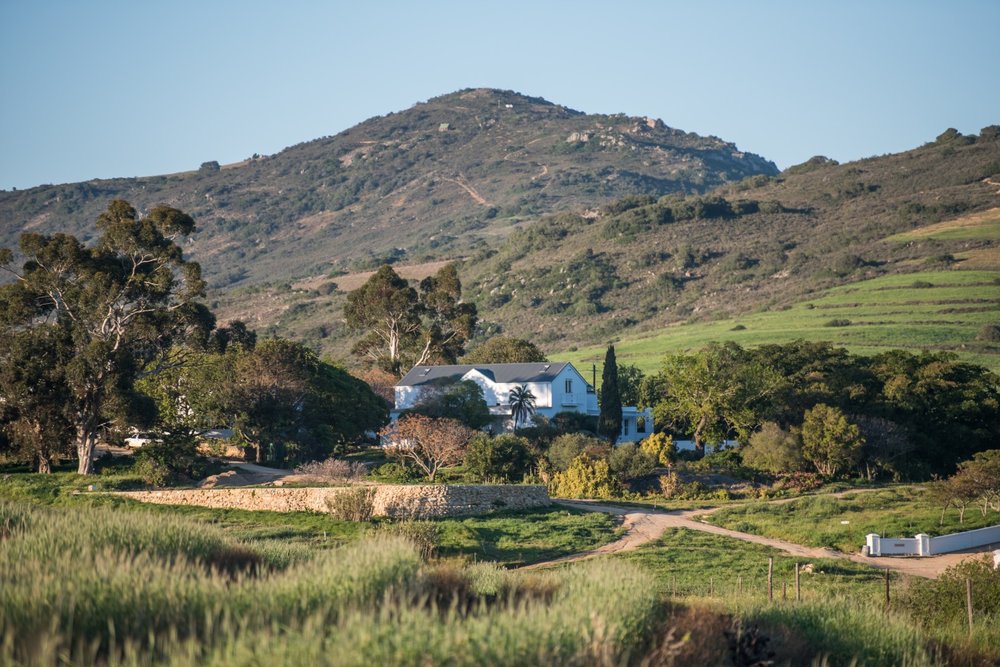 Lammershoek Winery
Lammershoek Winery
Who Are The Winemakers?
The region has a pulsing winemaking scene populated with some larger, now-established names as well as smaller niche players and, of course, that cool group of upstarts and mavericks. The natural wine scene has been one area in which the innovation has lifted The Swartland’s reputation among sommeliers and afficionados. Here is short representative set of winemakers – check the Swartland Wine and Olives site for more information on the wine route and who populates it.
Mullineux and Leeu Family Vineyards
Testalonga (natural winemakers with a very good reputation)
Riebeek Valley Wine Company (a collaboration of several wine makers)
Where is The Swartland?
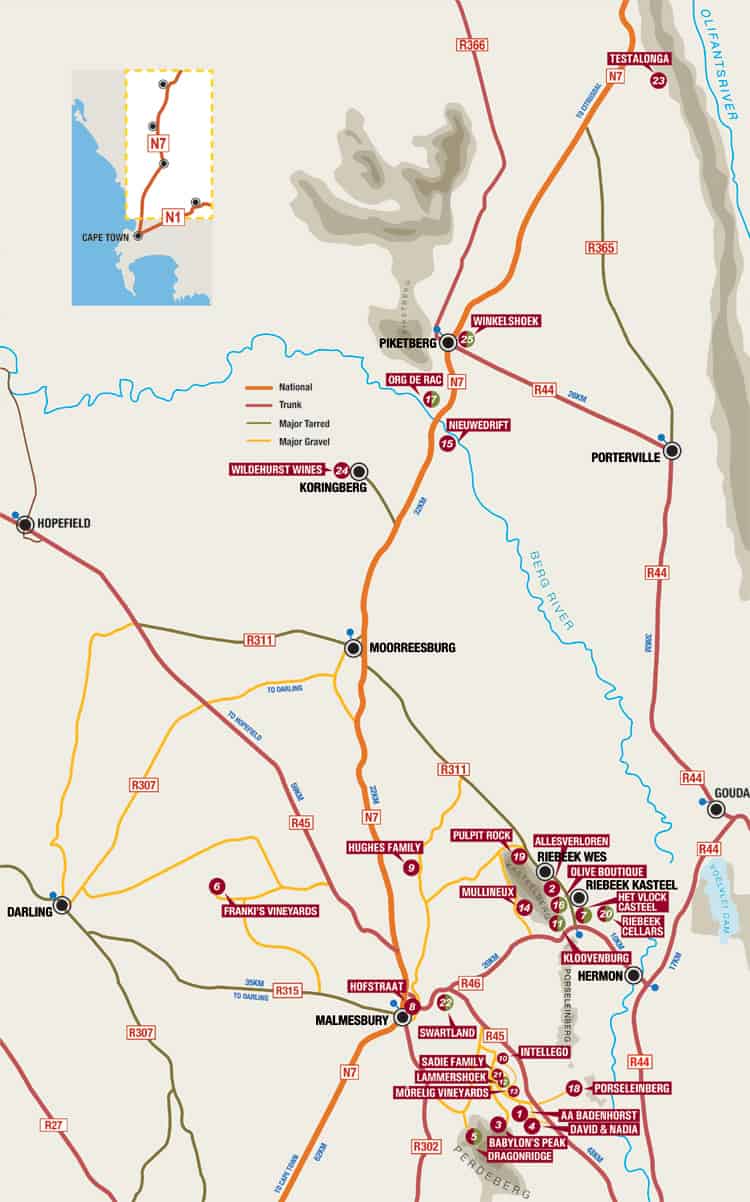 The Swartland Wine and Olives Route
The Swartland Wine and Olives Route
The Swartland is a very short drive (about an hour) directly north of Capetown. If you aren’t familiar with the Cape and its winemaking regions, there is a ridiculous number that are huddled up all around the outskirts of the city – Paarl, Stellenbosch, Franshhoek, Darling, the list goes on. You are going to be hard-pressed to decide where to go, never mind trying to explore them all. The Swartland will call you if you are looking for those smaller, more adventurous and individually-minded winemakers
When is the Best Time to Visit?
The spring season starts in October and the autumn runs until about May. Try to take in the Swartland Revolution wine celebration in November to see firsthand how the Swartland winemakers party and celebrate their individuality.
Useful Links:
www.swartlandwineandolives.co.za
Thanks also to Whiting Wine Distributors
www.whitingwinedistributors.co.za
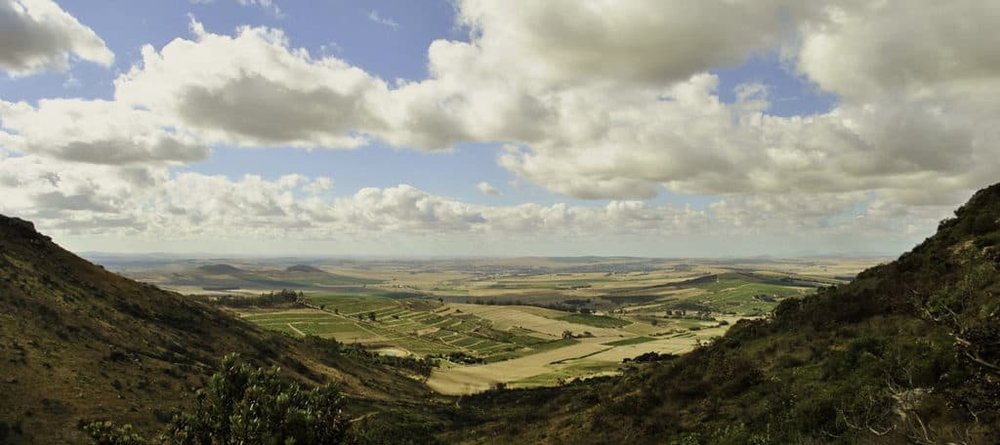 African vistas and innovative wines in The Swartland
African vistas and innovative wines in The Swartland
Photo and map credits www.swartlandwineandolives.co.za and Lammershoek Winery
